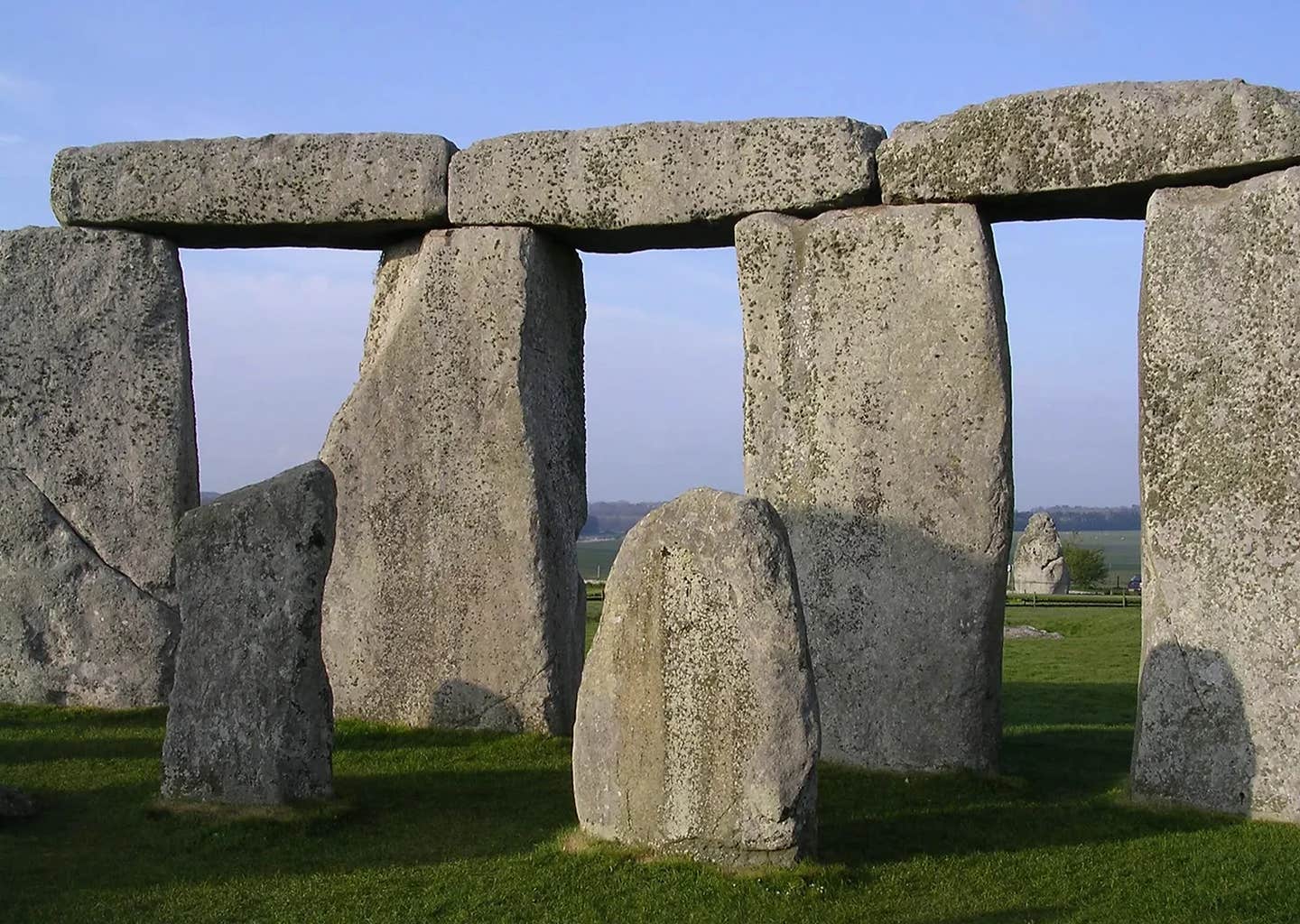Scientists solve the 4,500 year-old mystery of Stonehenge’s enormous stone pillars
The massive stones, each typically weighing an astonishing 20 tons and soaring up to 7 meters in height, have been long shrouded in mystery.

These massive stones typically weigh an astonishing 20 tonnes and soaring up to 7 meters in height. (CREDIT: CC BY-SA 3.0)
In a remarkable breakthrough published in the journal Science Direct, a research team led by geomorphologist Professor David Nash has finally solved the age-old mystery surrounding the origins of Stonehenge's massive sarsen stones.
These colossal stones, each typically weighing around 20 tons and standing up to 7 meters tall, have baffled historians and scientists for centuries. But thanks to modern scientific techniques and the unexpected return of a core sample drilled from Stonehenge's 'Stone 58' during repairs in the 1950s, the origins of these stones have now been uncovered.
The sarsen stones are the structural backbone of Stonehenge, making up all fifteen stones in the central horseshoe, the uprights and lintels of the outer circle, and several outlying stones like the Heel Stone, the Slaughter Stone, and the Station Stones.
While the smaller bluestones of the monument were previously traced to specific locations in the Preseli Hills of Wales, the more uniform sarsens had remained a mystery—until now.
The pivotal moment in this quest for origins came when the long-forgotten core, retrieved during the 1950s repair work and residing in Florida for decades, made its journey back to English Heritage at the behest of Mr. Robert Phillips.
This serendipitous event offered Professor Nash and his colleagues a unique opportunity to delve into the interior of one of Stonehenge's grand sarsen stones.
Embarking on a mission funded by the British Academy, Professor Nash's team commenced their exploration with non-destructive testing of all the remaining sarsens at the Stonehenge site.
The results were nothing short of astonishing, as they revealed that most of these ancient stones, including Stone 58, shared a strikingly similar chemical makeup, strongly suggesting a common origin.
To confirm their findings, the researchers ventured beyond the Stonehenge boundaries, analyzing sarsen outcrops from as far afield as Norfolk to Devon. Comparing the chemical composition of these outcrops with the retrieved core's chemistry was the next step in this scientific odyssey.
The breakthrough, however, arrived when the team conducted a destructive test on the core itself. This analysis unequivocally demonstrated that the composition of Stone 58 matched the chemistry of sarsen stones found in West Woods, nestled just south of Marlborough, approximately a 40-minute drive from the Stonehenge site today.
English Heritage Senior Properties Historian Susan Greaney expressed her excitement at the revelation, stating, "To be able to pinpoint the area that Stonehenge's builders used to source their materials around 2500 BC is a real thrill. Now we can start to understand the route they might have traveled and add another piece to the puzzle."
She went on to emphasize that the primary objective in selecting these sarsen stones was their size – Stonehenge's builders aimed for the biggest, most substantial stones they could find, preferably from the nearby vicinity.
In stark contrast, the bluestones used in the monument's construction seem to have been selected for different reasons, perhaps due to a sacred connection to the Preseli Hills in Wales. Susan Greaney's reflections on these findings underscored the meticulous planning and deliberate choices made by the ancient architects of Stonehenge.
Professor David Nash of the University of Brighton, who led this scientific voyage into the Neolithic past, remarked, "It has been really exciting to harness 21st-century science to understand the Neolithic past and finally answer a question that archaeologists have been debating for centuries."
He explained that X-ray fluorescence, a non-destructive technique, was instrumental in revealing the shared chemistry of most sarsen stones at Stonehenge. Mass spectroscopy, a specialized method, was then employed to analyze samples from sarsen outcrops across southern England and, crucially, the tiny pieces of the Phillips' Core.
Each outcrop's unique geochemical signature provided valuable data, but it was the return of the core that ultimately enabled the researchers to pinpoint the source area for the Stonehenge sarsens. Professor Nash expressed immense gratitude to the Phillips family for their role in this groundbreaking discovery.
With this revelation, the puzzle of Stonehenge's origin grows clearer, shedding new light on the remarkable engineering and intentionality of its Neolithic builders. The journey into the past continues, offering tantalizing glimpses into the mysteries that still linger within this ancient and iconic monument.
Note: Materials provided above by the The Brighter Side of News. Content may be edited for style and length.
Like these kind of feel good stories? Get the Brighter Side of News' newsletter.
Joseph Shavit
Head Science News Writer | Communicating Innovation & Discovery
Based in Los Angeles, Joseph Shavit is an accomplished science journalist, head science news writer and co-founder at The Brighter Side of News, where he translates cutting-edge discoveries into compelling stories for a broad audience. With a strong background spanning science, business, product management, media leadership, and entrepreneurship, Joseph brings a unique perspective to science communication. His expertise allows him to uncover the intersection of technological advancements and market potential, shedding light on how groundbreaking research evolves into transformative products and industries.
